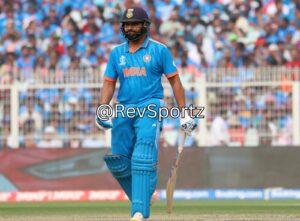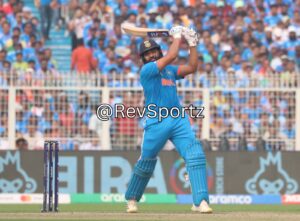
Captaincy is an art as well as a science. In the good old days of English cricket, Mike Brearley was chosen purely for his leadership, even though the selectors may not have plumped for him as a batsman.
Times have changed. In modern cricket, whatever the format, captaincy is a hard job. Perform or perish is the mantra the world over. And if you happen to be captain of Team India, then the job will give you plenty of headaches.
Watching Rohit Sharma lead India in the ICC World Cup, what stands out is his maturity, his calm and how willing he is to sacrifice his runs for the team’s sake. For Rohit the leader, the examination began on October 8, when India played Australia in their first match in Chennai. Each subsequent match has seen him get into a more aggressive mode. At the Eden Gardens in Kolkata on Sunday, Rohit was the Lord and Master as India crushed South Africa. When India batted first, he was turbo-charged. The 40 runs off 24 balls were ruthless. Studded with six fours and two sixes, Rohit came out and batted with a template, to get India off to a blistering start.
At a time when people are casting aspersions on Virat Kohli, as if he is playing for his own records, the communication channels between Rohit and his team are very clear. Kohli came out and spoke just after his 49th ODI century of how the dressing room instructions were to “bat deep”. He took his time and stayed till the end, something that was key to India scoring 326 runs in 50 overs.
Where did Temba Bavuma, South Africa’s skipper, go wrong in comparison with Rohit? Two areas. He lacked imagination in his field placings and the defensive mindset did not work. During this World Cup, the Proteas have dominated teams when batting first. Some said this side had shed the chokers’ tag. Maybe the experts spoke too early. Bavuma was unable to plan and execute adequately on a wicket which was slow. He needed to attack India’s batters, especially once Rohit and Shubman Gill fell in the power play. That did not happen.

This South Africa side has a potent combination of bowlers – pace and spin. But Keshav Maharaj was bowled out with 20 overs remaining, and Kagiso Rabada kept away for a long time as Shreyas Iyer got set. If Rohit was all aggression, the way Iyer batted and the manner in which Ravindra Jadeja scored quick runs were a sign that Bavuma was not at all in control of the proceedings. It appeared he was nervous as commander-in-chief.
In sharp contrast, Rohit has been a class apart. The way he used his bowlers – Mohammed Shami and Jadeja – were signs of his ruthlessness. He understood the pitch was gripping, and that Jadeja would be lethal. A tight length, grip and turn, bowled at a brisk pace – Jadeja was devastating.
And when the DRS had to be used, Rohit had no hesitation in taking the advice of his key men, Kohli and KL Rahul, the wicketkeeper. It has become a pattern to see Rohit consult them and then call for the DRS.
Where did Rohit look different on Sunday? Well, for someone who does not usually get animated on the field, his body language and facial contours were different. Clenching his fists, biting his teeth, yelling “Come on” – one saw a new Rohit. Did he look in total control? Yes. Ruthless and ready to throttle the rivals, that’s what Rohit has done as leader while keeping alive India’s dreams of winning the World Cup.
Cricket fans inside the Eden Gardens and millions on TV enjoyed watching this Rohit avatar. After all, it is the General who deserves praise for marshalling his troops. The biggest battles, however, lie ahead.




